-
- Asia-Pacific Headquarters and Singapore Branch Office Expansion
- KR Grants Approval to SHI’s 200K CBM Class Ultra-Large Ammonia Carrier with Ammonia Fuel
- KR awards AIP to HD Hyundai Heavy Industries’ LNG dual-fuel VLGC
- KR approves LCO2 cargo tank design developed by Hyundai Mipo and HD KSOE
- KR Publishes Research Report on Material Compatibility for Liquid Hydrogen Storage for Ships
-
- MSC 107 – News Final
- List of National Operational Contact Points for SOPEP/SMPEP (As of 31 July 2023)
- Guidelines on Using Biofuel on Ships
- Amendments for Technical Rules and Guidance (As of July 2023)
- Notice for Amendments to KR Technical Rules (Rules for the Classification of Steel Ships Pt 1)
- Notice for Amendments to KR Technical Rules (Guidance Relating to the Rules for the Classification of Steel Ships Part 8)
- Asia-Pacific Headquarters and Singapore Branch Office Expansion
- KR Grants Approval to SHI’s 200K CBM Class Ultra-Large Ammonia Carrier with Ammonia Fuel
- KR awards AIP to HD Hyundai Heavy Industries’ LNG dual-fuel VLGC
- KR approves LCO2 cargo tank design developed by Hyundai Mipo and HD KSOE
- KR Publishes Research Report on Material Compatibility for Liquid Hydrogen Storage for Ships
- MSC 107 – News Final
- List of National Operational Contact Points for SOPEP/SMPEP (As of 31 July 2023)
- Guidelines on Using Biofuel on Ships
- Amendments for Technical Rules and Guidance (As of July 2023)
- Notice for Amendments to KR Technical Rules (Rules for the Classification of Steel Ships Pt 1)
- Notice for Amendments to KR Technical Rules (Guidance Relating to the Rules for the Classification of Steel Ships Part 8)
-
- Asia-Pacific Headquarters and Singapore Branch Office Expansion
- KR Grants Approval to SHI’s 200K CBM Class Ultra-Large Ammonia Carrier with Ammonia Fuel
- KR awards AIP to HD Hyundai Heavy Industries’ LNG dual-fuel VLGC
- KR approves LCO2 cargo tank design developed by Hyundai Mipo and HD KSOE
- KR Publishes Research Report on Material Compatibility for Liquid Hydrogen Storage for Ships
-
- MSC 107 – News Final
- List of National Operational Contact Points for SOPEP/SMPEP (As of 31 July 2023)
- Guidelines on Using Biofuel on Ships
- Amendments for Technical Rules and Guidance (As of July 2023)
- Notice for Amendments to KR Technical Rules (Rules for the Classification of Steel Ships Pt 1)
- Notice for Amendments to KR Technical Rules (Guidance Relating to the Rules for the Classification of Steel Ships Part 8)
LEE Eunjoo, SONG Sangho, PARK Jaecheul I AI Convergence Research Team
1. Introduction
The asset management system is utilized by shipping companies to manage assets, such as the equipment on board, crew members, and navigation records. While large shipping companies possess in-house asset management software, its standalone, installation-based nature poses limitations in accessibility and maintenance.
Recently, with the research and development in maritime autonomous surface ships (MASS), there's an accentuated need for additional software and sensor equipment onboard. Therefore, we have redesigned the shipboard asset management platform to include autonomous vessels and developed an architecture that enables continuous maintenance and updates.
2. Architecture
Traditional vessel architecture mainly focused on ship information management, maintenance, crew management, and various types of information needed for navigation. However, the advent of autonomous ships has made additional functionalities essential.
Particularly important are the autonomy grade, as well as the management of sensors and software installed on the ship. Real-time monitoring of the operational status of these devices and software has also become indispensable. These functionalities are designed in a modular fashion, allowing for flexible utilization as needed. The overall functional structure is depicted in Figure 1.
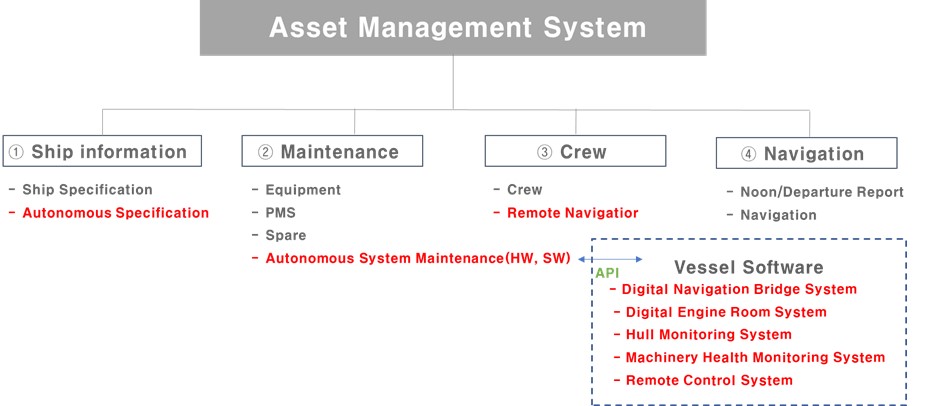
Figure 1. Asset Management System Architecture
3. Development
The system's architecture can be segmented into three layers: The Data Layer, Business Layer, and the View Layer. The Data Layer encompasses the ship's location and navigation information, and ship assets. This data is collected and stored in real-time. The Business Layer is composed of the backend server and its affiliated controllers and routers. This layer primarily executes data processing functions. Modules exclusive to autonomous vessels play a pivotal role here, incorporating features like AIS data processing and asset management based on 3D blueprints.
The View Layer is the user-facing segment, managing all user interface-related tasks. Web access is facilitated using NGINX, and every component of the system is virtualized in a Docker environment, ensuring stable operation. The developed web page is depicted in Figure 2.
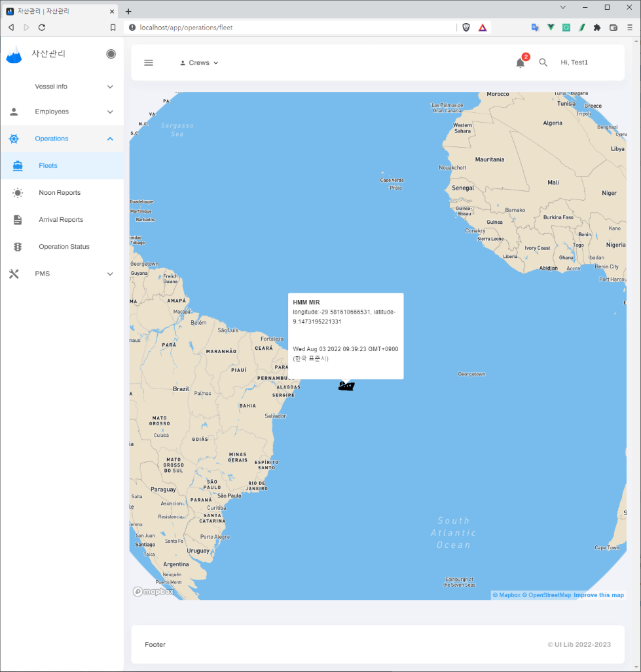
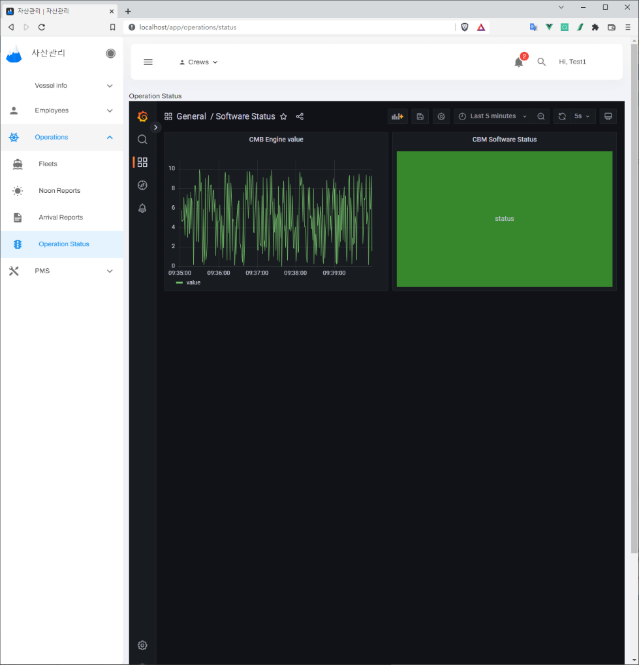
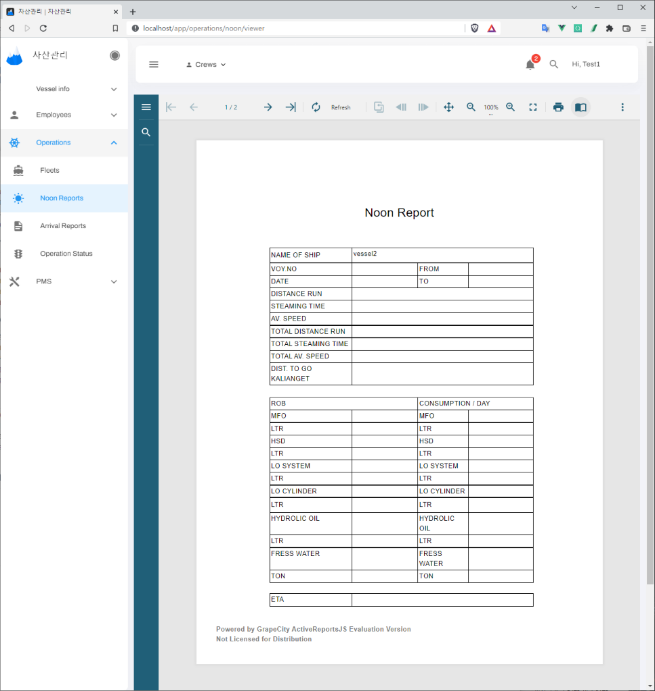
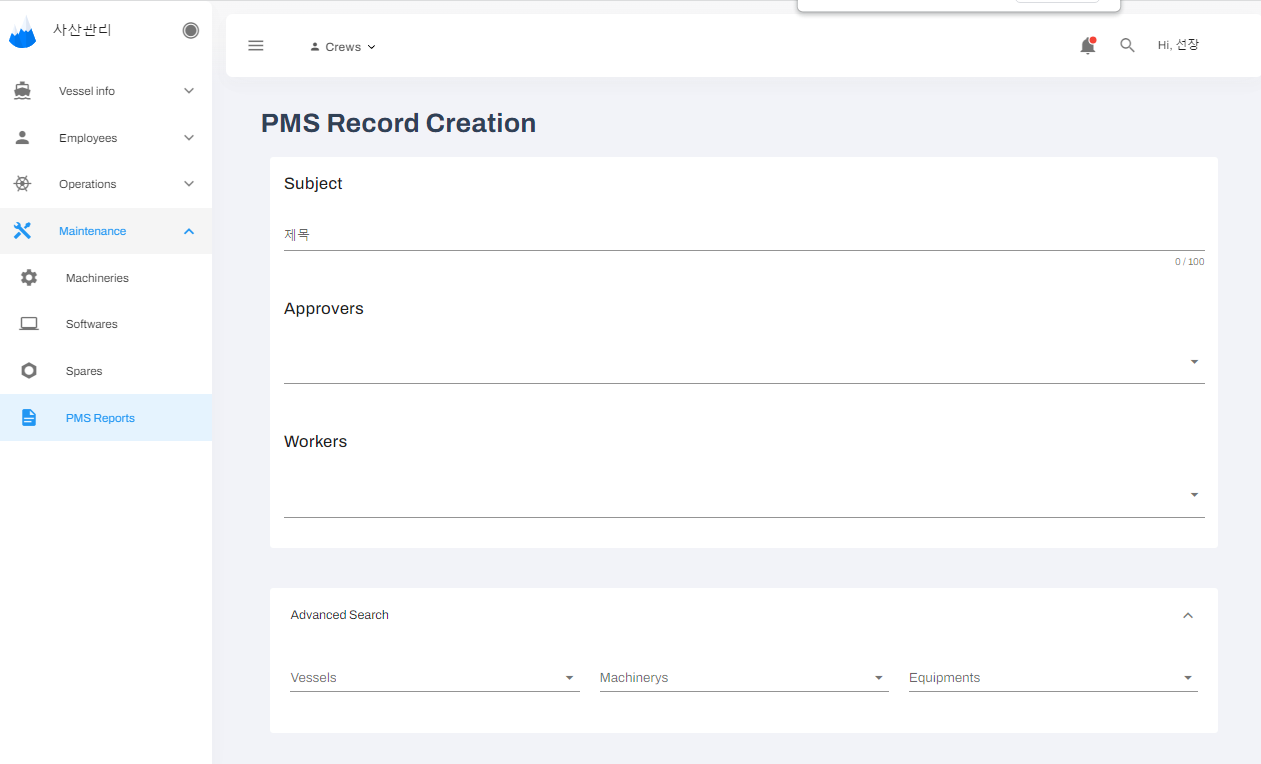
Figure 2. Asset Management System UI
4. Results
The developed system underwent deployment and testing in a cloud-based environment. Its web-based design has substantially enhanced user accessibility, and compatibility across various device environments was verified. Through tests in real-world settings targeting domestic coastal shipping companies, KR confirmed the seamless operation of crew management and the functions managing the software and hardware statuses of autonomous ships. This system is set for completion in 2025, with future plans centered on efficiently utilizing shipping data by uploading it in Excel format.
Contact to AI Convergence Research Team(digitalization@krs.co.kr)
